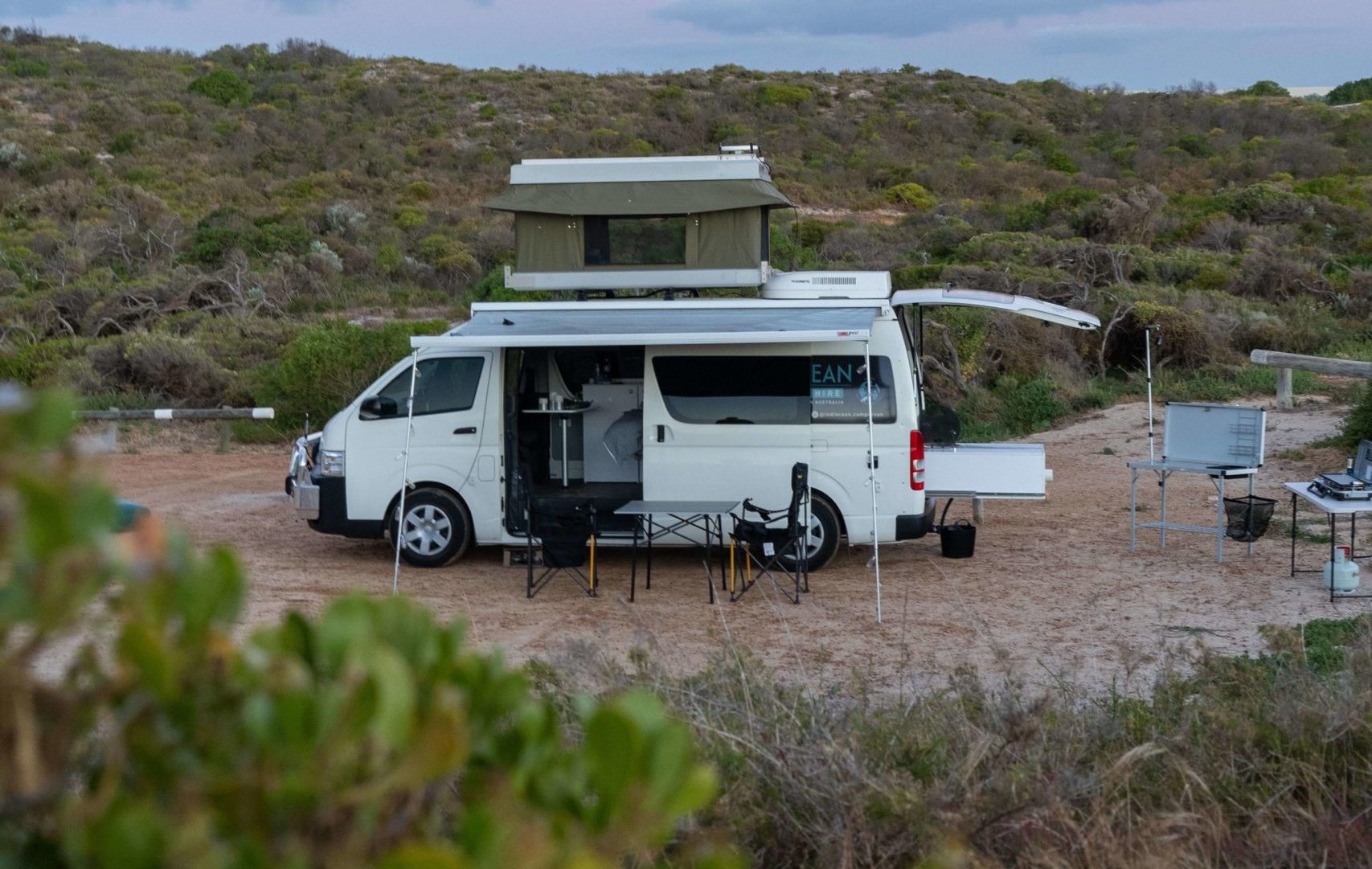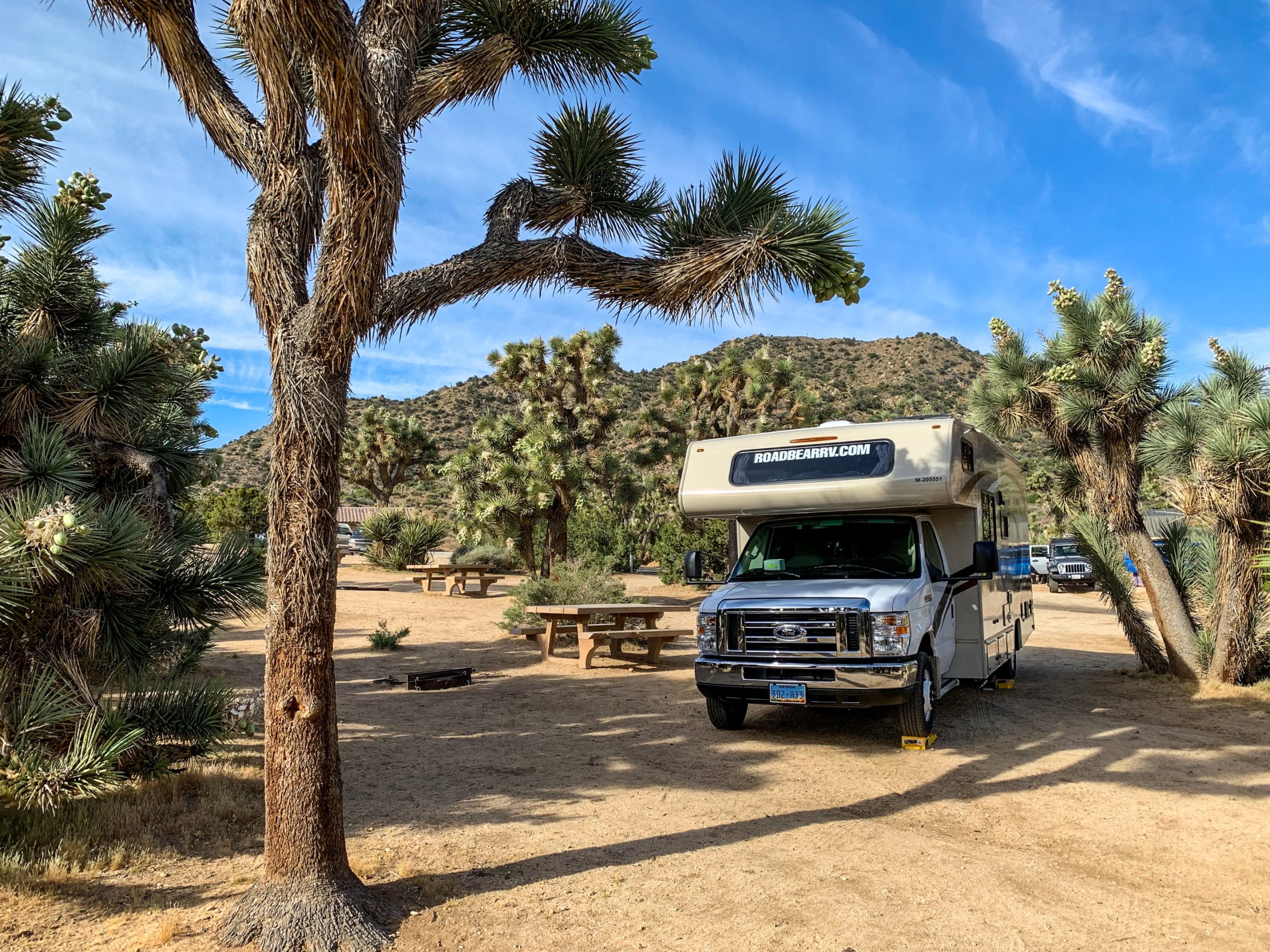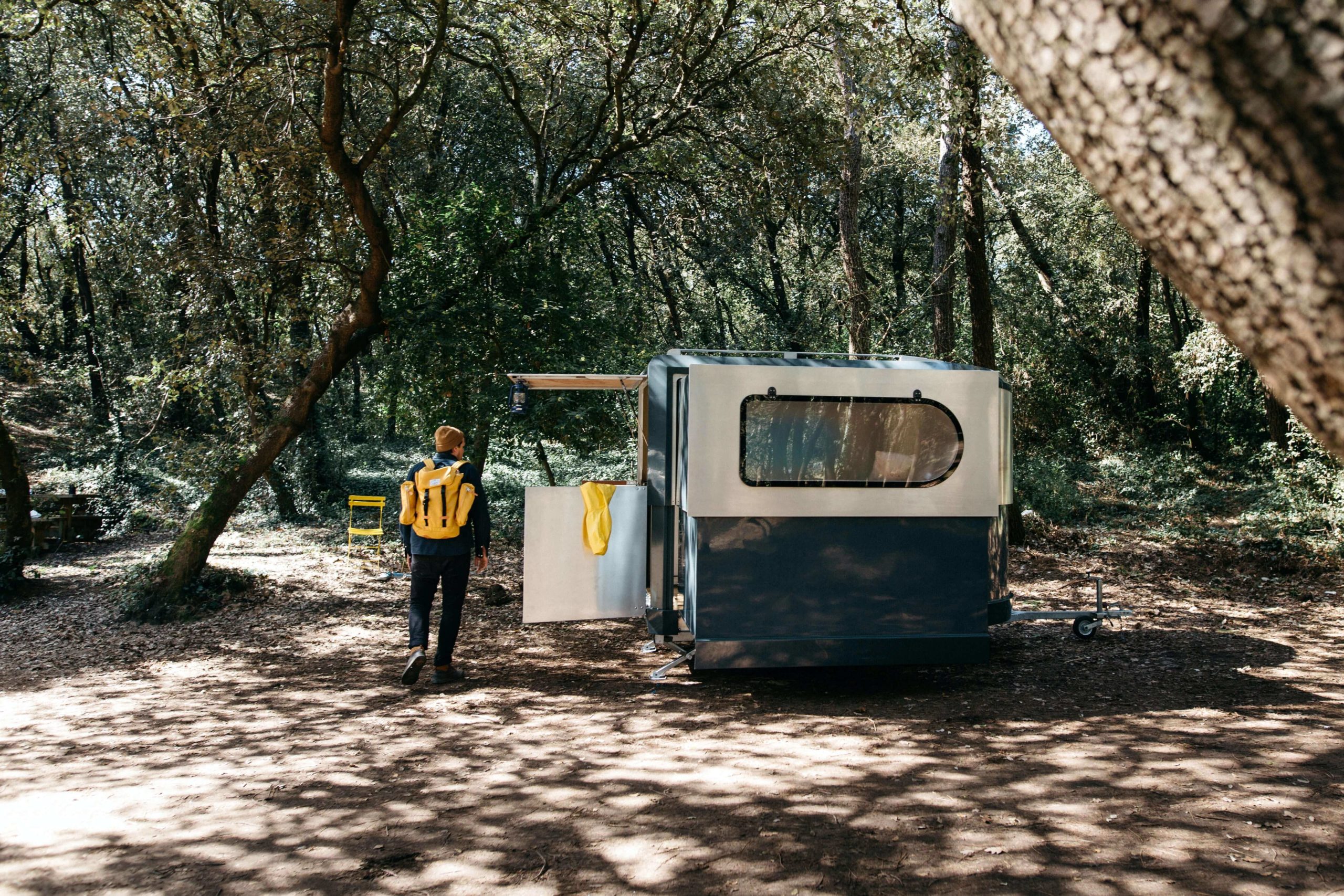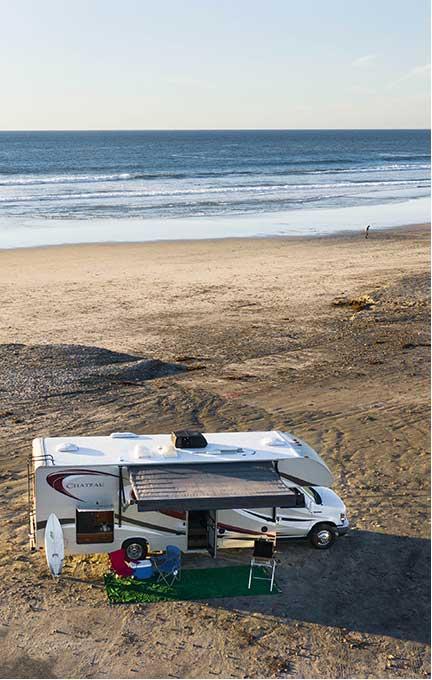Especially for first-time RVers, there can be a ton of confusion about what to pack and what to leave at home. The number of destinations and vehicle choices makes it tough to figure out if that extra blanket or creature comfort item is really worth it.
Fear not: packing for your first RV trip isn’t as daunting as it looks. A good rule of thumb to follow is to simply pack light. Much like a regular camping experience, extra gear ends up not being used, takes up valuable space, and takes away from the whole enjoyment of the adventure.
If you’re still unsure, read on. We’ve put together a guide highlighting the key things to pack for the most popular types of destinations Outdoorsy renters head to.
Campgrounds
Depending on the type of campground you’ve booked, you may have the essentials available to you – or nothing at all. Doing your research in advance will help you make the most of your time with your RV and ensure you’re not left missing anything crucial.
Many established campgrounds (those in local, state, and national parks) will have bathrooms with running water and modern toilets and trash disposal on-site. There may even be a camp host (likely during high season) who may be selling firewood and some other basic essentials. The host is also a great person to chat with for insider tips on the best hikes and points of interest in the area.

The amount of extra gear you need will largely depend on the size of the rig you’ve chosen for your getaway.
If you’ve picked something like a small, towable trailer, you have a cozy place to sleep and maybe brew morning coffee, but you’ll want to pack foldable camping chairs and a table to have some extra living space outside. If the campground doesn’t have an established bathroom, you’ll want to pack whichever bathroom supplies you need for your own personal comfort.
With bigger Class C, B, or A RVs, you may just need to bring clothes, toiletries, and recreation supplies as many come equipped with full bathrooms (using RV-specific toilet paper), small kitchens, and living areas. You’ll find that extra power banks will come in handy to charge essential electronics once you’ve turned off the RV for the night.
RV Parks
If you’ve booked an RV park, you’ve likely chosen a larger motorhome that uses the hookup infrastructure of an RV park to empty water and waste tanks depending on how often you stop.

At this size, many Outdoorsy owners equip their RVs with enough cookware, paper towels, cleaning supplies, and general essentials for a weekend adventure, but if your trip is more than 2-3 days, you’re going to want to bring more to meet your own needs. Longer trips may require another change of bedding as well.
Speaking of bedding, if you’re of the colder body type, an extra blanket (or even a heated one) isn’t a bad idea. Some RV heating systems take time to heat up the interior cabin, so having a good travel blanket can be a big help on especially chilly nights.
Especially with Class B and A motorhomes, it’s crucial to do a full walkthrough with the RV’s owner before taking off to understand how black and grey water tank disposal works along with refilling your freshwater supply.
Boondocking
Camping on dispersed public lands, also known as “boondocking” is one of the best ways to really enjoy the serenity of the outdoors. It generally means camping with no amenities and no hookups. It’s typically the most peaceful and serene of the RVing options but requires an understanding of the extra responsibility and preparation involved.
If you’re taking this route, you’re likely heading for Bureau of Land Management (BLM) or State/National Forest lands. While each state has different rules about camping on their state-owned lands, BLM and National Forest grounds are typically open to all with the proper permit.

These locales are primarily well off the beaten track with few services and spotty (at best) cell and satellite reception. This means a bit of over-preparation can go a long way toward the quality of your experience.
First, having two reliable map sources is a great idea: maps are easily downloadable on your favorite app for offline use, but a paper map or printout of where you’re headed is even better.
Next, solar-powered lighting and charging sources ensure that you likely won’t run out of either when you need it most. For extended trips, a backup generator (which some Outdoorsy renters provide) also offers general peace of mind. Off-power heaters (like those powered by butane or propane instead of the RVs electricity supply) are another good way to stay warm. If you’re planning on doing any sort of cooking outside of the RV, you’ll want enough fuel to power stoves, water heaters, etc.
If you’ve picked a smaller vehicle that doesn’t have its own bathroom, you’ll want to consider the likelihood that your destination will have no restroom (or a primitive outhouse at best). This situation calls for a composting toilet and waste bags.
An Easy RV Packing Checklist
The packing foundation for your first RV trip is as easy as following the checklist below. Every person’s comfort level is different, so add your own touches from here; that’s what makes the experience memorable! And as always, wherever you go, remember to Leave No Trace.
- Map
- Zip or reusable dry bag for important documents
- Movies (to keep kids entertained)
- Board games
- Puzzles
- Unbreakable plates and utensils
- Extra blanket
- Motion sickness tabs or bracelets
- Air deodorizer
- Foldable camping chairs + table
- Toiletry necessities
- Necessary food
- Medication
- Portable stove (for smaller setups)
Ready to hit the open road? Check out the selection of RVs Outdoorsy has available in your area.








